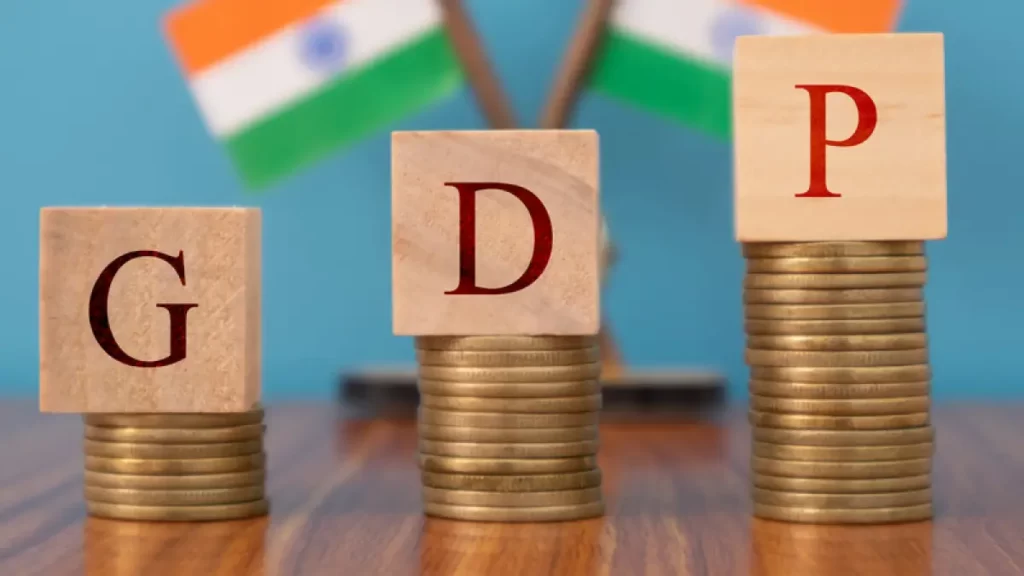Moody Projects GDP Growth 6.6-3% for India in June Quarter, Flags Fiscal Risks
Moody Projects GDP Growth | The latest economic projections by Moody’s Analytics indicate a moderate growth rate of 6.6-3% for India in the June quarter. However, alongside the positive outlook, the report also raises concerns regarding fiscal risks that need to be addressed. This article delves into the key findings of Moody’s analysis and highlights the implications for students preparing for government exams in various sectors, including teaching, police services, banking, railways, defense, and civil service positions.
The Moody’s Analytics report projects a GDP growth rate of 6.6-3% for India in the June quarter. This indicates a steady recovery from the previous slump caused by the COVID-19 pandemic. The projections take into account various factors such as government policies, consumer demand, and global economic trends. However, it is important to note that these projections are subject to change based on evolving circumstances.
For students preparing for government exams, this news holds significance as it provides insights into the country’s economic outlook. Understanding the projected GDP growth rate and the accompanying fiscal risks can help candidates in exams related to economics, finance, and policymaking. It is essential to grasp the nuances of economic indicators, fiscal management, and their implications on various sectors, including education, law enforcement, banking, transportation, defense, and administrative services.

Why this News is Important:
Moody Projects GDP Growth | The projected GDP growth rate has implications for various sectors, including education, where the recovery of the economy can lead to increased government spending on improving educational infrastructure and recruitment of teachers. Similarly, in sectors like banking, railways, defense, and civil services, economic growth can translate into better job opportunities, budget allocations, and policy reforms.
The fiscal risks highlighted by Moody’s report call for proactive policy measures to ensure sustainable economic growth. Students aspiring for civil service positions like IAS and PCS must be aware of these challenges and should be well-versed in formulating effective policies to tackle fiscal deficits, promote revenue generation, and manage public debt. This news provides valuable insights into the real-world economic scenario, enhancing their understanding of policy formulation and implementation.
Historical Context:
India’s economic growth has witnessed fluctuations in recent years. The COVID-19 pandemic severely impacted the economy, leading to a contraction in GDP growth. However, with the gradual easing of restrictions and the implementation of vaccination campaigns, the country has been on a path to recovery. Moody’s Analytics projections for the June quarter reflect this recovery process and highlight the importance of sustainable fiscal management to maintain a positive growth trajectory.
Key Takeaways from “Moody’s Projects 6.6-3% GDP Growth for India in June Quarter, Flags Fiscal Risks”:
| Serial Number | Key Takeaway |
|---|---|
| 1. | Moody’s Analytics projects a GDP growth rate of 6.6-3% for India in the June quarter. |
| 2. | The projected growth indicates a recovery from the COVID-19 slump. |
| 3. | The report highlights fiscal risks stemming from high fiscal deficit, rising public debt, and challenges in revenue generation. |
| 4. | The report highlights fiscal risks stemming from a high fiscal deficit, rising public debt, and challenges in revenue generation. |
| 5. | Students preparing for government exams should understand the implications of economic projections and fiscal risks on various sectors such as education, banking, railways, defense, and civil services. |
Conclusion:
Moody Projects GDP Growth | Moody’s Analytics projects a GDP growth rate of 6.6-3% for India in the June quarter, indicating a steady recovery from the pandemic-induced slowdown. While the positive outlook is encouraging, the report also flags fiscal risks that require attention from policymakers.
For students preparing for government exams, understanding these economic projections and fiscal risks is crucial, as it enhances their knowledge of real-world economic scenarios and policy implications. By staying updated with current affairs and the economic landscape, candidates can be better prepared for exams and contribute effectively to their respective fields in the future.
Important FAQs for Students from this News
Q1: What is the significance of Moody’s Analytics’ GDP growth projection for India?
A1: Moody’s Analytics’ GDP growth projection provides insights into the expected economic performance of India in the June quarter, indicating the pace of recovery from the pandemic-induced slowdown. It helps assess the overall economic health of the country and has implications for various sectors.
Q2: What are fiscal risks, and why are they important?
A2: Fiscal risks refer to potential challenges and vulnerabilities in a country’s fiscal management, such as the high fiscal deficit, rising public debt, and difficulties in revenue generation. They are crucial to monitor as they can impact a nation’s economic stability, investment climate, and policy formulation.
Q3: How can knowledge of economic projections and fiscal risks benefit students preparing for government exams?
A3: Understanding economic projections and fiscal risks is important for students preparing for government exams as it helps them comprehend the current economic scenario, policy implications, and potential opportunities and challenges in various sectors. It enables them to have a comprehensive understanding of the subject matter and aids in answering related questions in the exams.
Q4: Which government exams might include questions related to this news?
A4: Exams related to economics, finance, policymaking, civil services (such as IAS and PCS), banking, railways, defense, and other government positions may include questions related to economic projections, fiscal risks, and their implications.
Q5: How can students stay updated with current affairs for their exam preparations?
A5: Students can stay updated with current affairs by regularly reading newspapers, following reputable news websites, referring to government publications and reports, and utilizing resources such as current affairs magazines and mobile applications specifically designed for exam preparations.
Some Important Current Affairs Links















